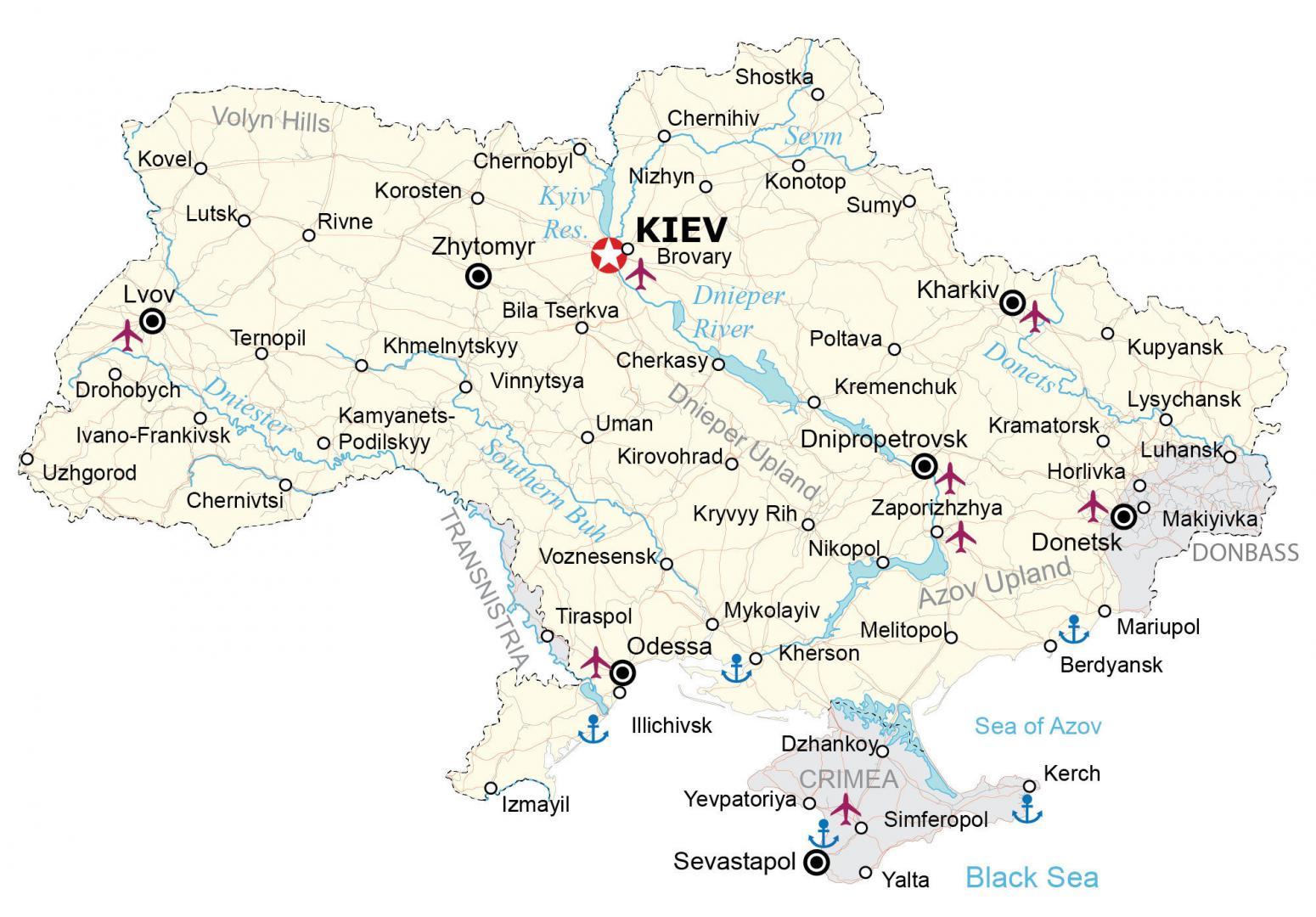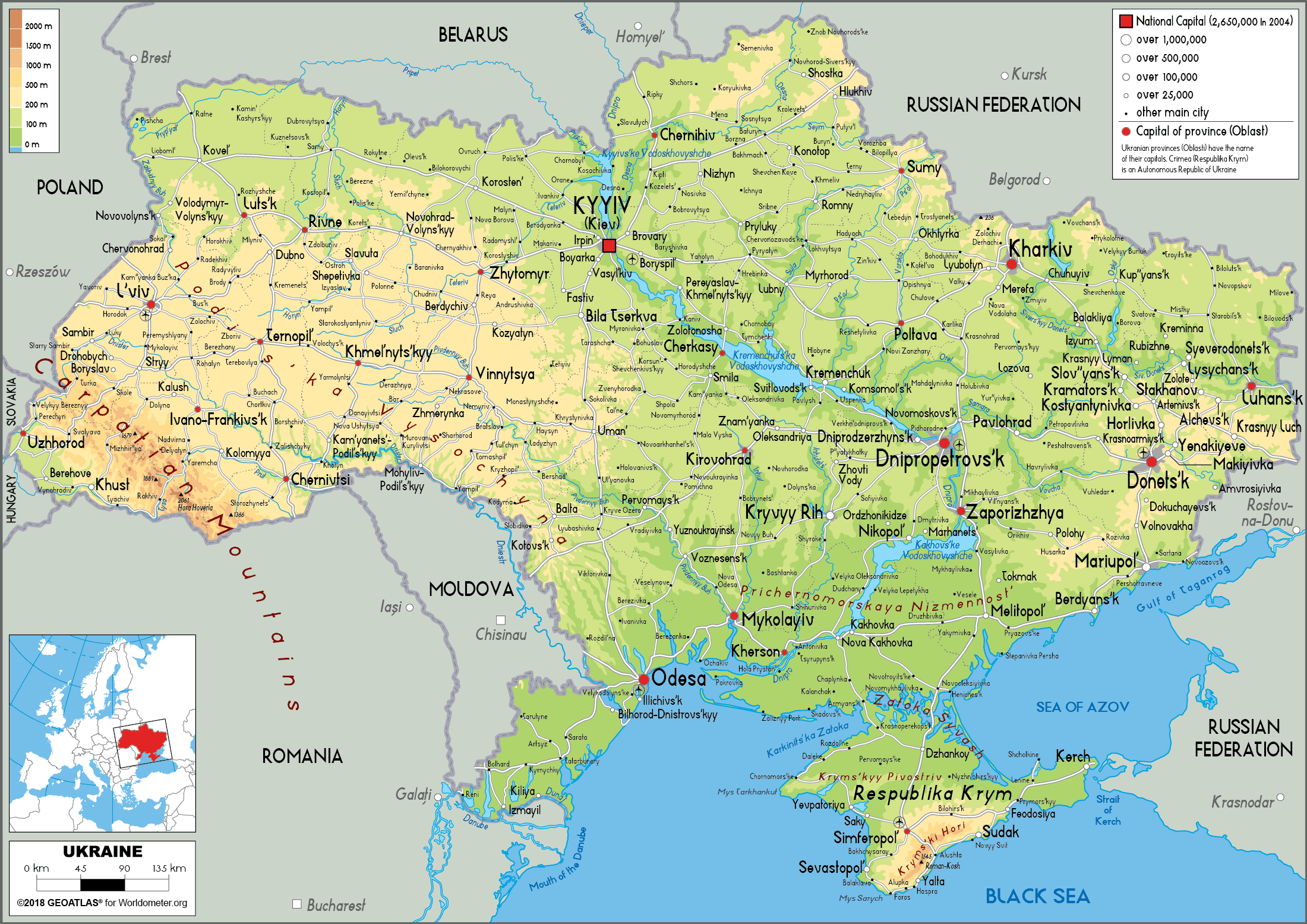Ukraine, the largest country entirely in Europe, boasts a diverse and captivating geography that shapes its identity and global significance. From its expansive plains to the Carpathian Mountains, understanding the Ukraine map geography is essential for anyone seeking to delve into the nation's natural beauty, strategic locations, and cultural richness. This article provides an in-depth exploration of Ukraine's geography, offering insights into its regions, rivers, and borders, while highlighting why this knowledge is valuable for travelers, researchers, and geography enthusiasts alike.
As we navigate through the intricate details of Ukraine's geography, it becomes evident that the country's landscape plays a crucial role in its economic, political, and social development. The diverse terrain of Ukraine, ranging from fertile black soil to vast steppes, supports agriculture and industry while also influencing its geopolitical importance. By studying the Ukraine map geography, one can appreciate the complexity and beauty of this Eastern European nation.
Understanding the geography of Ukraine not only enhances our appreciation for its natural features but also provides context for its historical and contemporary events. This article aims to guide readers through the essential aspects of Ukraine's map and geography, offering valuable insights into its topography, climate, and regional diversity. Whether you're planning a trip, conducting research, or simply expanding your knowledge, this exploration of Ukraine's geography will provide the foundation you need.
Read also:Streamlining Your Experience A Comprehensive Guide To Atampt Customer Service Online
What Are the Key Features of Ukraine's Geography?
Ukraine's geography is characterized by its vast plains, rolling hills, and mountainous regions. The country's central and southern parts are dominated by the Dnieper River, one of Europe's major waterways, which divides Ukraine into two distinct regions: Right-Bank Ukraine and Left-Bank Ukraine. The Black Sea and the Sea of Azov form natural boundaries to the south, adding to the country's strategic importance.
Additionally, Ukraine's Carpathian Mountains in the west offer a striking contrast to the flatlands of the steppes. These mountains are not only a geographical feature but also a cultural and ecological treasure, housing diverse wildlife and traditional communities. Exploring the Ukraine map geography reveals the intricate balance between human activity and nature, making it a fascinating subject for study.
Why Is Understanding Ukraine Map Geography Important?
Knowledge of Ukraine's geography is vital for understanding its role in regional and global contexts. The country's strategic location between Europe and Asia makes it a key player in international trade and politics. Furthermore, the Ukraine map geography highlights the nation's natural resources, such as fertile farmland and mineral deposits, which contribute significantly to its economy.
For travelers, understanding the geography of Ukraine can enhance their experience by guiding them to the most scenic and culturally rich destinations. Whether it's exploring the Carpathian Mountains, cruising along the Dnieper River, or visiting historic cities, the geography of Ukraine offers endless opportunities for adventure and discovery.
How Does the Ukraine Map Geography Influence Its Climate?
The geography of Ukraine greatly influences its climate, which varies from temperate continental in the north to subtropical along the Black Sea coast. The country's vast plains allow for cold winds from the north and warm air from the south to interact, creating a diverse range of weather patterns. The Ukraine map geography also plays a role in determining regional climates, with the Carpathian Mountains experiencing cooler temperatures and heavier precipitation compared to the lowlands.
This climatic diversity supports a wide variety of flora and fauna, making Ukraine a biodiversity hotspot. Understanding the relationship between geography and climate is essential for predicting weather patterns, managing natural resources, and planning sustainable development projects.
Read also:Whorsquos Hosting Snl Tonight A Deep Dive Into The Starstudded Lineup
What Are the Major Regions in Ukraine Map Geography?
Ukraine is divided into 24 oblasts (regions) and one autonomous republic, Crimea, each with its unique geographical features. The central and eastern parts of the country are dominated by the Dnieper River basin, while the western regions are characterized by the Carpathian Mountains. The southern coastline along the Black Sea and the Sea of Azov adds another layer of geographical diversity to Ukraine.
- Kyiv Oblast: Home to the capital city and the Dnieper River
- Carpathian Region: Known for its mountainous terrain and rich cultural heritage
- Crimea: A disputed territory with unique geographical and political significance
Ukraine Map Geography: Rivers and Waterways
Rivers play a crucial role in Ukraine's geography, shaping its landscape and supporting its economy. The Dnieper River, the longest in Ukraine, is a vital transportation route and a source of hydroelectric power. Other significant rivers include the Dniester, the Southern Buh, and the Danube, which forms part of Ukraine's border with Romania.
These waterways not only provide irrigation for agriculture but also support fishing and tourism industries. Understanding the Ukraine map geography in relation to its rivers and waterways is essential for managing water resources and ensuring sustainable development.
Ukraine shares borders with seven countries: Russia, Belarus, Poland, Slovakia, Hungary, Romania, and Moldova. These borders are shaped by the country's geography, with natural features such as rivers and mountains often serving as boundaries. The Ukraine map geography reveals the complexity of these borders, which have been subject to historical changes and political disputes.
Studying the borders of Ukraine provides insights into its geopolitical significance and its relationships with neighboring countries. It also highlights the challenges and opportunities presented by Ukraine's geographical position in Eastern Europe.
Ukraine is rich in natural resources, many of which are directly influenced by its geography. The country's fertile black soil, known as chernozem, is one of the most productive in the world, supporting a thriving agricultural sector. Additionally, Ukraine has significant reserves of coal, iron ore, and natural gas, which contribute to its industrial base.
The Ukraine map geography also reveals the distribution of these resources, with coal and iron ore concentrated in the eastern regions and agricultural lands dominating the central and western parts of the country. Understanding the geography of Ukraine's natural resources is essential for sustainable development and economic planning.
Ukraine's geography has played a significant role in shaping its urbanization patterns. Major cities such as Kyiv, Lviv, and Odessa are strategically located along rivers or coastlines, facilitating trade and transportation. The Ukraine map geography highlights the importance of these urban centers in driving economic growth and cultural development.
Each city in Ukraine reflects the country's diverse geography, with Kyiv situated on the banks of the Dnieper River, Lviv nestled in the Carpathian foothills, and Odessa enjoying a picturesque location on the Black Sea coast. Exploring the geography of Ukraine's cities offers a glimpse into the nation's vibrant urban life and historical legacy.
For travelers, the Ukraine map geography serves as a valuable tool for planning trips and discovering hidden gems. Whether you're interested in hiking through the Carpathian Mountains, exploring the historic sites of Kyiv, or relaxing on the Black Sea coast, understanding the geography of Ukraine can enhance your travel experience.
Consider using maps and guides to identify the best routes, accommodations, and activities based on the geographical features of each region. This approach not only ensures a memorable journey but also deepens your appreciation for the natural and cultural wonders of Ukraine.
Table of Contents
- What Are the Key Features of Ukraine's Geography?
- Why Is Understanding Ukraine Map Geography Important?
- How Does the Ukraine Map Geography Influence Its Climate?
- What Are the Major Regions in Ukraine Map Geography?
- Ukraine Map Geography: Rivers and Waterways
- Exploring the Ukraine Map Geography Through Its Borders
- What Are the Natural Resources in Ukraine Map Geography?
- Ukraine Map Geography: Urbanization and Major Cities
- How Can You Use the Ukraine Map Geography for Travel?
In conclusion, the Ukraine map geography offers a comprehensive view of the country's natural beauty, strategic importance, and cultural richness. By exploring the diverse features of Ukraine's landscape, we gain a deeper understanding of its role in the world and the opportunities it presents for travel, research, and development. This article aims to provide valuable insights into Ukraine's geography, encouraging readers to appreciate and engage with this remarkable nation.


